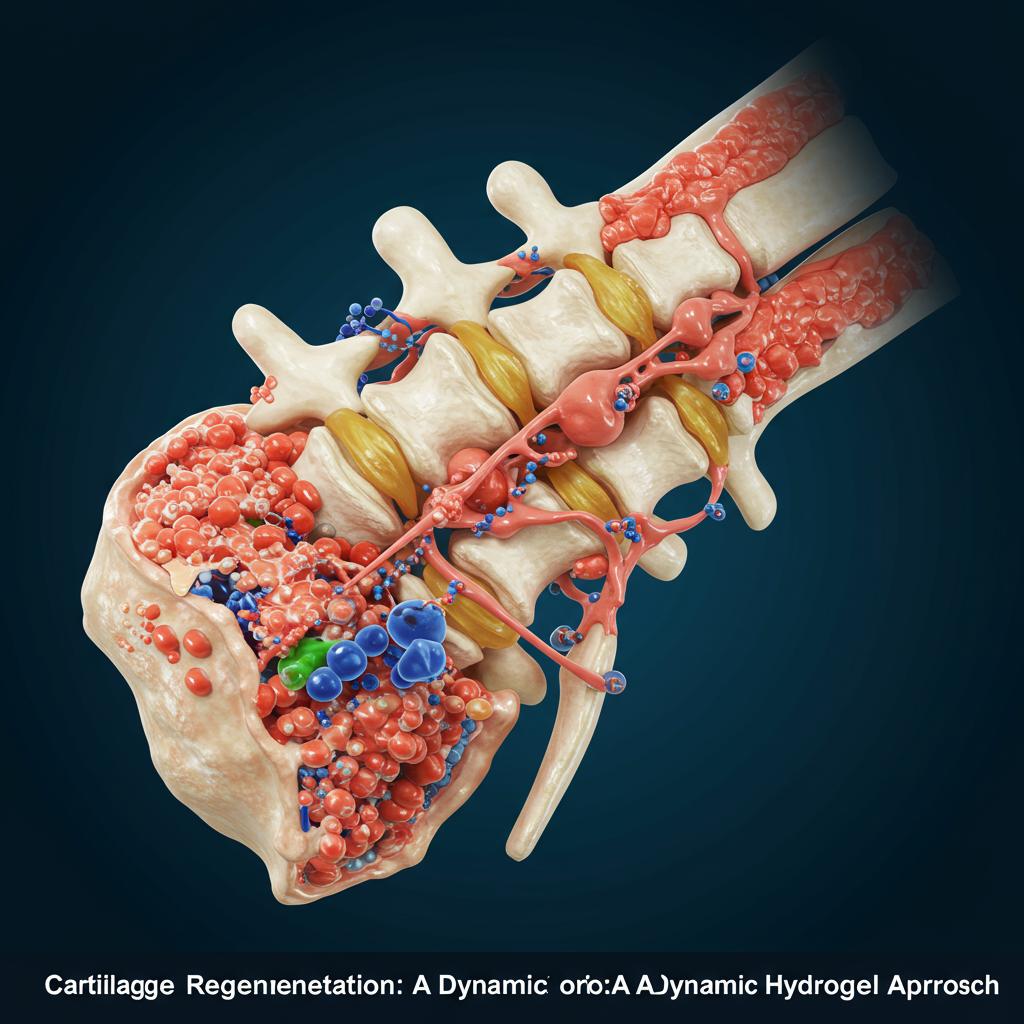
Imagine a world where damaged cartilage could be easily repaired, restoring joint function and relieving pain. This isn’t science fiction, it’s the exciting potential of cartilage tissue engineering. Specifically, hydrogel-based cartilage tissue engineering (HCTE) holds immense promise for regenerating this vital tissue. While current methods face challenges, researchers are making strides in developing innovative solutions.
One exciting advancement involves a dynamic new biomaterial system designed to boost stem cell effectiveness in cartilage regeneration. This system combines a special type of hydrogel with tiny, drug-loaded microspheres to create an environment perfect for cartilage growth. Let’s break down why this is so innovative:
- Dynamic Dual-Crosslinked Hydrogel: Think of this hydrogel like a super-flexible, injectable scaffold. It’s made of hyaluronan (HA), a natural substance found in our bodies, and is designed with both dynamic and stable crosslinks. This gives it unique properties, like the ability to be easily injected and to self-heal – meaning it can adapt to the shape of the defect and remain intact. This minimizes the invasiveness of the procedure and ensures the transplanted cells are protected.
- Kartogenin-Loaded Microspheres: Kartogenin (KGN) is a molecule that’s been shown to promote cartilage formation. By loading it into tiny biodegradable microspheres within the hydrogel, researchers can ensure a slow and steady release of KGN to the surrounding cells. This sustained release is key to maximizing its beneficial effects.
- Enhanced Stem Cell Behavior: The unique viscoelasticity – or “squishiness” – of the hydrogel plays a crucial role in how stem cells behave. It encourages the cells to spread out, multiply, and cluster together, mimicking the natural process of cartilage formation.
- Dual-Action Stimulation: This system works through two main pathways to stimulate cartilage regeneration. The hydrogel’s physical properties activate a pathway called the integrin-mediated Hippo signaling pathway, while the released KGN activates the TGF-β signaling pathway. Both of these pathways are essential for cartilage development and growth. This dual approach amplifies the regenerative potential of the system.
- Promising Results in Animal Models: When this dual-stimuli hydrogel, loaded with bone marrow mesenchymal stem cells (BMSCs), was tested in rabbits with cartilage damage, it showed significant cartilage regeneration. This suggests that this approach could be highly effective in treating cartilage injuries in humans.
This innovative system addresses some of the major hurdles in current HCTE approaches by:
- Improving Stem Cell Transplantation: The injectable and self-healing nature of the hydrogel allows for a less invasive delivery of stem cells directly to the damaged site.
- Boosting Chondrogenic Differentiation: The combination of the hydrogel’s physical properties and sustained KGN release significantly enhances the transformation of stem cells into cartilage cells.
This research represents a significant leap forward in cartilage regeneration. By combining a dynamic, injectable hydrogel with a sustained release of a cartilage-promoting drug, scientists have created a powerful tool for promoting cartilage repair. This approach holds tremendous promise for treating cartilage injuries and improving the lives of those suffering from joint pain and limited mobility. While further research and clinical trials are necessary, this technology represents a significant step towards a future where cartilage regeneration is a readily available and effective treatment option.
